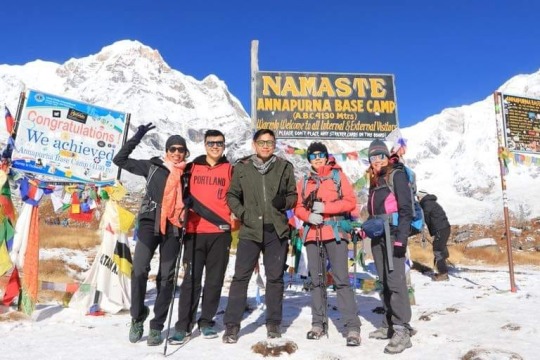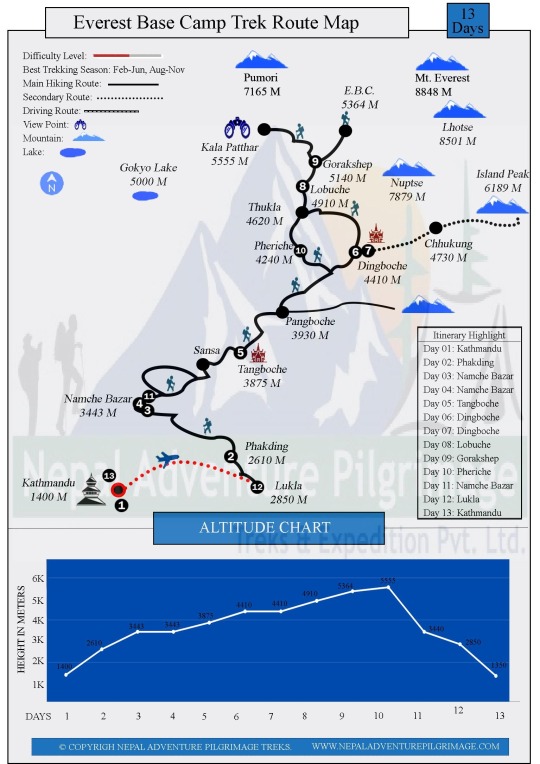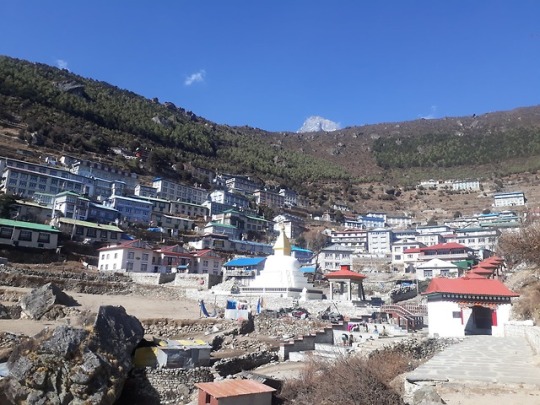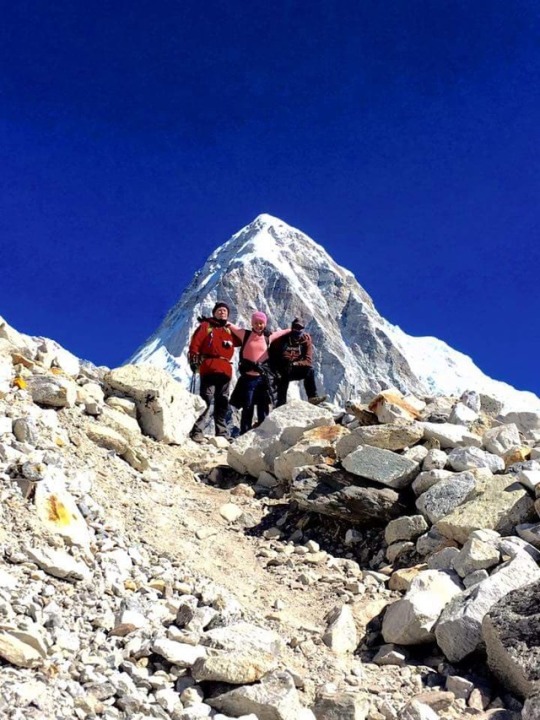Don't wanna be here? Send us removal request.
Text
Scenic Adventure - Annapurna base camp trek

Are you an adventure enthusiast looking for a thrilling trekking experience amidst breathtaking landscapes? Look no further than the Annapurna Base Camp trek in Nepal. Nestled in the mighty Himalayas, this trek offers a perfect blend of natural beauty, cultural exploration, and physical challenge. In this article, we will delve into the mesmerizing world of the Annapurna Base Camp trek and guide you through the wonders it has to offer.
Table of Contents
Introduction: The allure of the Annapurna Base Camp trek
Planning and Preparation
The Trek Begins: Kathmandu to Nayapul
Entering the Annapurna Conservation Area
Exploring the Annapurna Sanctuary
Return Journey: Farewell to the Himalayas
Conclusion
FAQs
2.1 Choosing the Right Time to Trek
2.2 Obtaining Permits and Permissions
2.3 Physical Fitness and Training
2.4 Packing Essentials for the Trek
4.1 Tikhedhunga: The Gateway to the Mountains
4.2 Ulleri: Conquering the Staircase
4.3 Ghorepani: A Majestic Sunrise at Poon Hill
5.1 Tadapani: A Serene Forest Retreat
5.2 Chhomrong: The Gateway to the Annapurna Base Camp
5.3 Machhapuchhre Base Camp: A Glimpse of the Fishtail Mountain
5.4 Annapurna Base Camp: Surrounded by Giants
1. Introduction: The allure of the Annapurna Base Camp trek
The Annapurna Base Camp trek is a renowned expedition that takes you to the heart of the Annapurna range, one of the world's most spectacular mountain ranges. It is a popular choice among adventure seekers due to its accessibility, diverse landscapes, and stunning views. This trek offers a unique opportunity to witness the grandeur of snow-capped peaks, cascading waterfalls, lush forests, and traditional Nepalese villages.
2. Planning and Preparation
2.1 Choosing the Right Time to Trek
The Annapurna Base Camp trek can be undertaken throughout the year, but the best time to go is during the spring (March to May) and autumn (September to November) seasons. These months offer stable weather conditions and clear views of the mountains.
2.2 Obtaining Permits and Permissions
Before embarking on the trek, it is essential to acquire the necessary permits and permissions. You will need an Annapurna Conservation Area Permit (ACAP) and a Trekkers' Information Management System (TIMS) card. These permits ensure the conservation of the area and help provide essential facilities to trekkers.
2.3 Physical Fitness and Training
The Annapurna Base Camp trek is a moderately challenging trek that requires a good level of physical fitness. Engaging in regular cardio exercises, strength training, and hiking practice before the trek will help prepare your body for the adventure ahead.
2.4 Packing Essentials for the Trek
Packing the right gear and essentials is crucial for a comfortable and safe trekking experience. Some essential items include sturdy trekking boots, comfortable clothing layers, a warm sleeping bag, a waterproof jacket, a first aid kit, and high-quality sunscreen.
3. The Trek Begins: Kathmandu to Nayapul
The journey to Annapurna Base Camp begins with a scenic drive from Kathmandu to Nayapul. Nayapul is the starting point of the trek, situated at an altitude of 1,070 meters. As you embark on this adventure, you will pass through picturesque villages, terraced fields, and vibrant forests, setting the stage for the awe-inspiring journey that lies ahead.
4. Entering the Annapurna Conservation Area
4.1 Tikhedhunga: The Gateway to the Mountains
After crossing the Bhurungdi Khola river, you will reach Tikhedhunga, a small village that serves as the gateway to the Annapurna region. Here, you can rest and immerse yourself in the local culture, savoring traditional Nepalese cuisine and observing the daily lives of the villagers.
4.2 Ulleri: Conquering the Staircase
From Tikhedhunga, you will ascend a challenging staircase consisting of around 3,000 stone steps. This uphill climb to Ulleri is a test of stamina and willpower. As you make your way up, take breaks to admire the panoramic views of the surrounding landscapes.
4.3 Ghorepani: A Majestic Sunrise at Poon Hill
Ghorepani is a charming village located at an elevation of 2,860 meters. It is a popular resting point for trekkers, and an early morning hike to Poon Hill is a must-do. From Poon Hill, you can witness a breathtaking sunrise over the Annapurna and Dhaulagiri mountain ranges, painting the sky with hues of gold and pink.
5. Exploring the Annapurna Sanctuary
5.1 Tadapani: A Serene Forest Retreat
As you continue your trek, you will reach Tadapani, a serene village surrounded by lush rhododendron forests. The tranquility of this place, coupled with the stunning mountain views, makes it a perfect spot to relax and rejuvenate.
5.2 Chhomrong: The Gateway to the Annapurna Base Camp
Chhomrong is the last permanent settlement before reaching the Annapurna Base Camp. This charming village offers mesmerizing views of the Annapurna South and Machhapuchhre mountains. Immerse yourself in the local culture and enjoy the hospitality of the Gurung community.
5.3 Machhapuchhre Base Camp: A Glimpse of the Fishtail Mountain
The trek from Chhomrong to Machhapuchhre Base Camp takes you through rugged terrain and towering cliffs. This camp offers a close-up view of the majestic Machhapuchhre (Fishtail) Mountain. The scenic beauty and solitude of this place create a sense of wonder and tranquility.
5.4 Annapurna Base Camp: Surrounded by Giants
The final leg of the trek takes you to the Annapurna Base Camp, situated at an altitude of 4,130 meters. Here, you will be surrounded by towering peaks, including Annapurna I, the 10th highest mountain in the world. Witnessing the sunrise and sunset from this vantage point is an experience that will stay with you forever.
6. Annapurna base camp trek map

7. Return Journey: Farewell to the Himalayas
After experiencing the magnificence of the Annapurna Base Camp, it is time to bid farewell to the Himalayas and begin your return journey. As you make your way back, you will retrace your steps, reminiscing about the incredible landscapes, warm hospitality, and personal triumphs of the trek. Take this opportunity to immerse yourself in the local culture once again, savoring the delicious cuisine and interacting with the friendly locals.
Conclusion
The Annapurna Base Camp trek is a remarkable adventure that combines the thrill of trekking with the beauty of nature and the warmth of Nepalese culture. From the enchanting villages to the snow-capped peaks, every step of the journey offers a unique experience. Whether you're an experienced trekker or a novice adventurer, this trek will leave you with memories that last a lifetime.
FAQs
Q1: Is prior trekking experience necessary for the Annapurna Base Camp trek? A: While prior trekking experience is beneficial, the Annapurna Base Camp trek is suitable for beginners as well. It is important to be physically fit and mentally prepared for the challenges of the trek.
Q2: Are there any age restrictions for the trek? A: There are no specific age restrictions, but participants should be in good health and capable of walking for extended periods. It is advisable to consult with a healthcare professional before undertaking the trek, especially for older individuals.
Q3: Are there teahouses or accommodations available along the trekking route? A: Yes, there are teahouses and lodges available at regular intervals along the trekking route. These provide basic amenities such as food, accommodation, and hot showers, allowing trekkers to rest and rejuvenate.
Q4: What is the average duration of the Annapurna Base Camp trek? A: The average duration of the trek is around 10 to 14 days, depending on the itinerary and the pace of the trekker. It is essential to acclimatize properly and allow ample time for rest during the journey.
Q5: Is it necessary to hire a guide or porter for the trek? A: Hiring a guide or porter is a personal choice. While it is not mandatory, having a guide can enhance your trekking experience by providing local knowledge, ensuring safety, and taking care of logistics. Porters can also assist in carrying your heavy backpack, allowing you to focus on enjoying the trek.
0 notes
Link
0 notes





